Ikiru: Tilted Wipes
-
4 December 2008
4 December 2008
Not a clue at all, Vili! But, now that you have brought it to our attention, it surely does have a different feeling. On these freeze-frames the compositions seem more claustrophobic…and, my, how fascinating! I hadn’t realized how incredible these compositions and transitions are! Maybe Jeremy up north in China can tell us a bit about how a proper wipe is done, or some of our other filmmakers might chime in. Technically, how is a wipe done with actual film stock?
6 December 2008
Coco: Technically, how is a wipe done with actual film stock?
I just realised that I don’t actually know for sure. I just always assumed that it was a matter of cutting the film stock of the two scenes in half, so to speak, and taping those two pieces together:
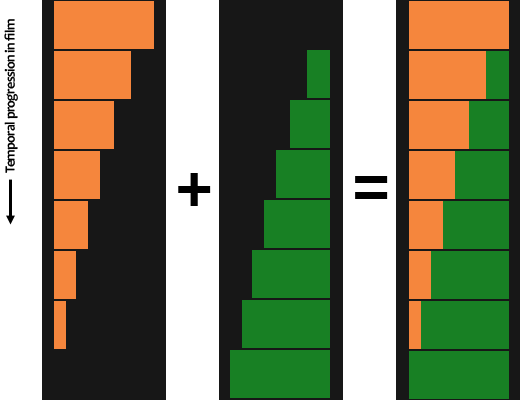
(Obviously not to scale.)
But whether it was actually done like this, I don’t know. It seems like a lot of work.
If it was done in this manner, one way to explain the highly tilted wipes in Ikiru might be that Kurosawa took a short-cut in the cutting process, and instead of cutting each frame separately, he made just one long diagonal cut:
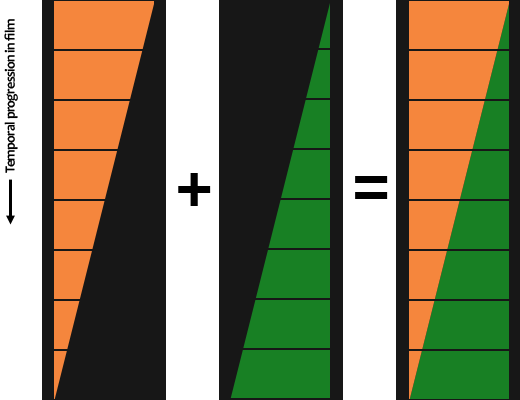
Or, perhaps all wipes were done like this. If so, faster wipes — and I think that the wipes in Ikiru are faster than those in Rashomon or Seven Samurai — would be more tilted (the longer the wipe, the smaller the angle). Coming to think of this, note that actually also the Rashomon and Seven Samurai wipes are ever so slightly tilted.
Yet, I don’t think that this would really explain wipes like those in Seven Samurai that are not that long, yet are almost totally straight.
As I said, this is all speculation. I really don’t know. I had fun drawing the diagrams, though!
9 December 2008
Those are impressive, Vili! You’ve got mad skills with a computer!
Well, what an incredible thing to think that wipes were so difficult to do! Back in the day, I did some super-8 film stuff and we had a little tiny splicer and used acetone or something, and that was that.
Kurosawa really used the wipe a lot! he must have been amazing at editing. They always say he was so fast (an equivalent might be the one about Michelangelo-he was said to be able to sculpt finished marble at the rate a quarreyman could remove a rough block from the mountain. And, maybe, then the second part applies too-that he was so fast because he knew what he was looking for!).
12 December 2008
Coco: Those are impressive, Vili! You’ve got mad skills with a computer!
Thank you, Coco. It’s not really much that I did there, and I guess anyone with a basic level Photoshop skills is able to pull that off, but I still had fun with the diagram. Maybe I should have become a technical drawer?
Then again, life as a drawer would probably be pretty dull. Open, close, open, close, open, close… Especially if you are one of those display pieces at IKEA, which are mechanically opened and closed, with a screen noting how many times it has been open-closed without the drawer unit exploding!
Coco: Kurosawa really used the wipe a lot! he must have been amazing at editing. They always say he was so fast
I don’t know if the various shots of him editing which we have in different documentaries are just posing, but if they actually show his editing process for real, he indeed was really fast. And yet, also very precise.
19 December 2008
I have no idea how a transition is done on film, but I would guess Vili is correct.
I dont have any strong thoughts on wipes, and have nearly no experience in working with them. I do however believe that a straight wipe is a “mean-while” or “at-the-same-time” sort of thing, like a- this and this is occurring too.
While a tilted wipe is more of a chapter change or a shift in direction and pace. It greats a relation between scenes, but maintains their individuality, rather then a bond from the straight wipe.
However, I need to watch these films mentioned again to be sure, as I dont think what I mention syncs up proper with the what is going on in the movies. And as I said, transitions I know little about, so I’m properly way off here.
19 December 2008
While a tilted wipe is more of a chapter change or a shift in direction and pace. It greats a relation between scenes, but maintains their individuality, rather then a bond from the straight wipe.
However, I need to watch these films mentioned again to be sure, as I dont think what I mention syncs up proper with the what is going on in the movies. And as I said, transitions I know little about, so I’m properly way off here.
Yeah, it’s a bit off here, but may well have this meaning elsewhere. In any case, in Ikiru, as far as I can see, the tilted wipe is used consistently throughout the movie. The first three wipes that I display in the original post are from the “bureaucracy sequence”, where we are shown a series of very quick scenes lasting mostly a second or two each. The fourth wipe comes from later on in the movie, where it takes us from one location to another, but I think still retains us pretty much within the same “chapter”.
I’ll need to look around whether there is a book or two that properly explains the technical process behind movie making from the black and white era. I know only bits and pieces, and it would be good to have a better understanding of these things.
20 December 2008
Yep, I got no idea about any of this.
If you find any information, be sure to share.
Leave a comment
Log in or to post a comment!

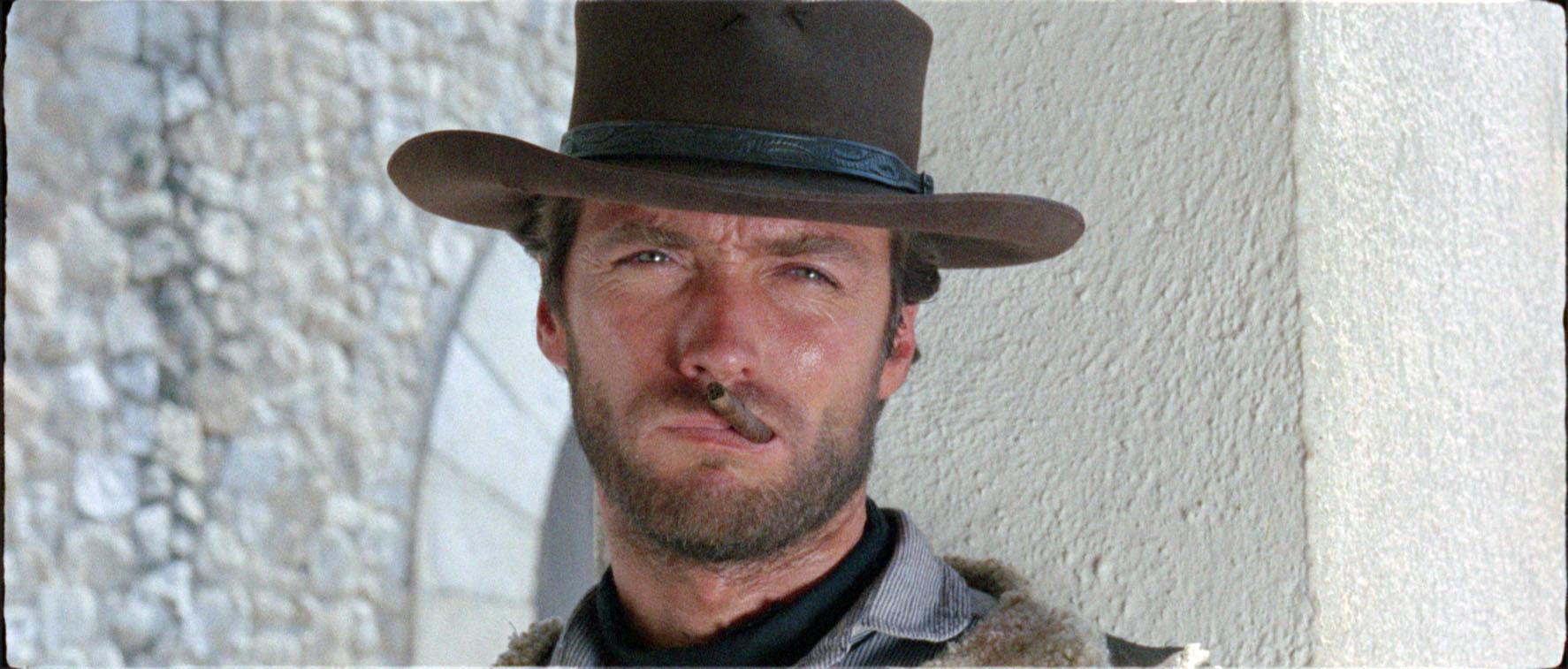

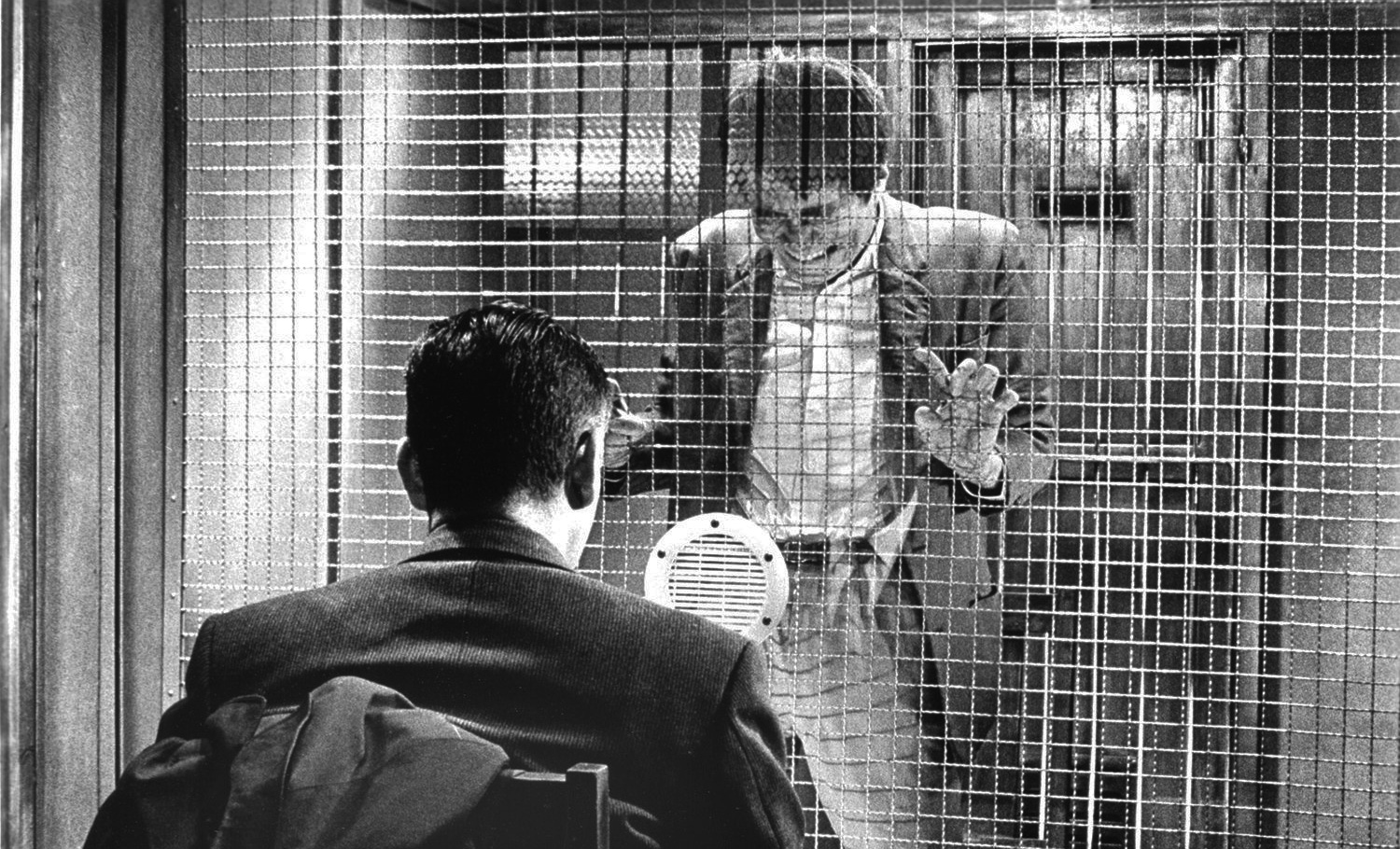
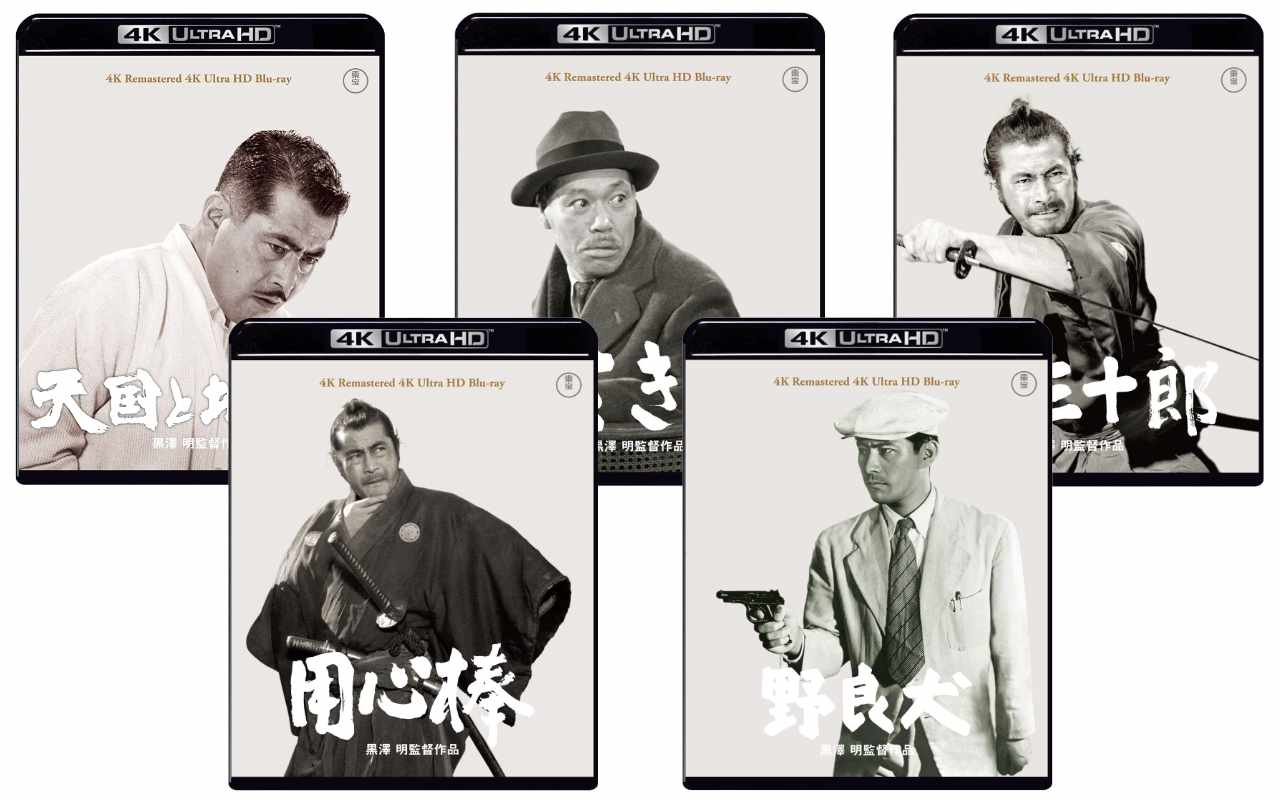
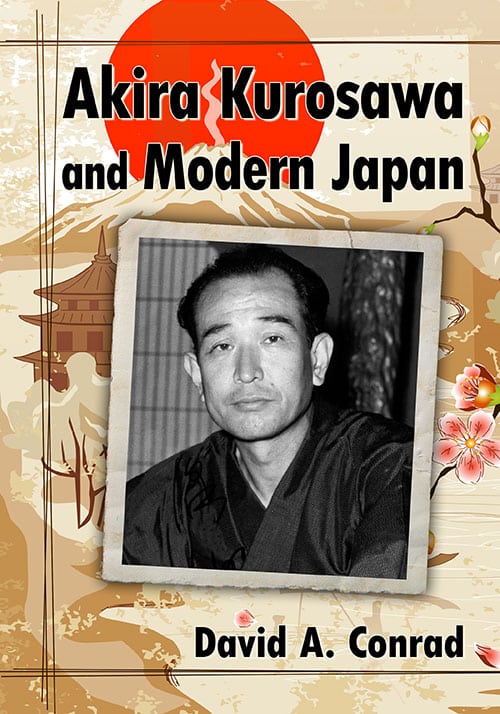
There is something curious going on with the wipes in Ikiru. They are (all?) slightly tilted. I don’t actually remember anyone pointing this out before, but perhaps someone has.
Here are three wipes from the sequence early on in the film where the women are being hurled around in post-war Japan’s endless bureaucracy.
Notice how the wipes are not straight. This is actually true of all wipes in that sequence, and it doesn’t seem to be unique to the bureaucracy montage either. Here is a wipe from later on in the movie:
Again, the wipe has a slight diagonal aspect to it. Also, whether the tilt is to the left or to the right depends on the direction of the wipe itself.
I haven’t gone through all the wipes in the film, so I cannot say for sure if this is true of all wipes in Ikiru. Actually, perhaps due to the episodic nature of the movie, there seem to be less wipes than usual — in Ikiru Kurosawa prefers the fade.
In any case, off the top of my head I cannot think of another Kurosawa film where the wipes would be like this. To illustrate that this should not be due to some technical reasons, here is a wipe from Rashomon (made two years earlier):
(We have actually discussed this particular wipe in more detail here.)
And here is a wipe from Seven Samurai, which Kurosawa made after Ikiru:
Neither the Rashomon nor the Seven Samurai wipe is tilted.
So, why tilt the wipes in Ikiru? Was it just a technological experiment, or are the tilts meant to communicate something?
Perhaps the tilted nature of the wipes makes them less comfortable for the audience? Gives the wipes a stronger sense of urgency?
I tried to think of other diagonal lines and uses of diagonal framing in the film, but diagonal shapes don’t seem to have any specific relevance in the movie.
Watanabe, of course, is slightly tilted himself with his head hanging down and no proper posture. But I don’t think that this is it.
Any ideas?